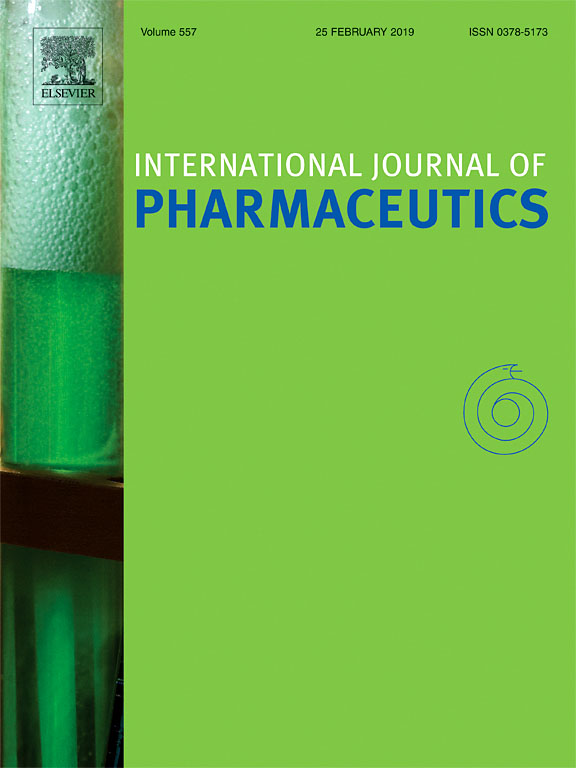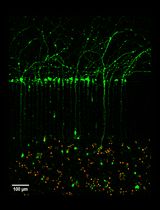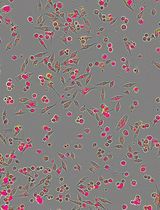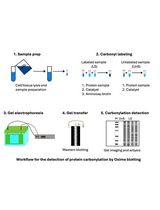- EN - English
- CN - 中文
Cell Microencapsulation and Cryopreservation with Low Molecular Weight Hyaluronan and Dimethyl Sulfoxide
利用低分子量透明质酸和二甲基亚砜进行细胞微胶囊化和冷冻保存
发布: 2019年02月20日第9卷第4期 DOI: 10.21769/BioProtoc.3164 浏览次数: 5788
评审: Vivien Jane Coulson-ThomasAnonymous reviewer(s)
Abstract
Cryopreservation is commonly used for the storage of cells, tissues, organs or 3D cell-based products using ultra-low temperatures, which involves the immersion in liquid nitrogen for their long-term preservation. The cryopreservation of several microencapsulated cells is usually performed by the slow freezing with the dimethyl sulfoxide (DMSO) as a cryoprotectant agent (CPA). In this study, we cryopreserved several microencapsulated cells with the natural, non-toxic low molecular-weight hyaluronan (LMW-HA) at 5% and DMSO 10% solution assessing cell viability and metabolic activity after thawing. The cryopreservation of microencapsulated D1 mesenchymal stem cells (D1MSC) and murine myoblast cells (C2C12) with the LMW-HA 5% presented similar outcomes after thawing compared to the DMSO solution, showing the low molecular weight hyaluronan as a natural, non-toxic CPA that can be used preventing the DMSO related adverse effects after the implantation of the cryopreserved cell-based products.
Keywords: Cryoprotectant agent (低温保护剂)Background
Cell microencapsulation is extensively used to enclose cells allowing the exchange of nutrients between the environment and the core of the microcapsule containing the cells. In vivo, microcapsules protect the cells from the immune system while allowing the release of therapeutic molecules by the entrapped cells (Orive et al., 2014). Consequently, these advantages have promoted the development and employment of cell encapsulation in organ replacement, tissue engineering and regenerative medicine as drug and cell delivery therapies (Gurruchaga et al., 2015b). Nowadays the storage of microencapsulated cells is performed by slow freezing using a linear cooling rate (-0.3-1 °C/min) (Murua et al., 2009). Different cryoprotectant agents (CPAs) have been used for their cryopreservation being dimethylsulfoxide (DMSO) the most used with good results in a wide range of microencapsulated cells (Massie et al., 2011; Gurruchaga et al., 2015a; Gryshkov et al., 2015). However, DMSO has been related to several adverse reactions after the implantation of cryopreserved cell-based products (Shu et al., 2014; Ruiz-Delgado et al., 2009) such as cardiac arrhythmia, cardiac arrest, tonic-clonic seizure or diarrhea among others, being other alternative CPAs investigated to overcome the DMSO’s drawback (Mantri et al., 2015). In this context, low molecular weight hyaluronan (LMW-HA), a natural non-toxic CPA, has demonstrated cryoprotective effects in the cryopreservation of several cell types (Hutson et al., 2009; Ujihira et al., 2010; Iwama et al., 2014). Therefore, in this study, we have determined the cryoprotective effect of LMW-HA 5% for the cryopreservation of D1 mesenchymal stem cells (D1MSC) and murine C2C12 myoblast (C2C12) compared to DMSO 10% in each cell medium. LMW-HA 5% preserved the metabolic activity and cells viability similarly to DMSO containing solutions after thawing, showing the potential of LMW-HA as a CPAs. Although the use of LMW-HA as a CPA has been investigated in microencapsulated cells, it may represent an alternative CPA in the cryopreservation of other 3D cell-based products avoiding the use of DMSO.
Materials and Reagents
- Materials
- Pipette tips (Sharlab, catalog number: 00PC1000-1)
- 1.5 ml Eppendorf tubes (Sharlab, catalog number: 027200400P)
- T-175 flask (175 cm2) (Corning, catalog number: 431466)
- T-75 flask (75 cm2) (Corning, catalog number: 431464U)
- 15 ml centrifuges tubes (Corning, catalog number: 430791)
- 50 ml centrifuges tubes (Corning, catalog number: 430828)
- 96-well plates (Corning, catalog number: 353072)
- 24-well plates (Corning, catalog number: 3524)
- 5 ml polystyrene round bottom tubes (Corning, catalog number: 352052)
- Cryovials (Corning, catalog number: 430489)
- 0.22 μm syringe filter NML plus (Minisart, catalog number: 17823)
- Stericup® (Merk Millipore, model: SCVPU02RE)
- Cell strainer 40 and 100 μm (Corning, catalog number: 352360)
- Luer 10 ml syringe (Braun, catalog number: 4606108V)
- Cells
- D1 mesenchymal stem cells (D1MSC) (ATCC, catalog number: CRL12424)
- Murine myoblast cells (C2C12) (ATCC, catalog number: CRL1772)
- Reagents
- Liquid nitrogen (Air liquid)
- Reverse osmosis water (Merck Milli Q system, catalog number: 7003/7005)
- Dubelcco’s Phosphate Buffered Saline (DPBS) (GIBCO, catalog number: D8537)
- DPBS containing Ca2+ and Mg2+ (Lonza, catalog number: 17-512F)
- Trypsin 0.25% (GIBCO, catalog number: 25200056)
- Mannitol (Sigma, catalog number: M4125)
- Calcium chloride (Sigma, catalog number: C4901)
- Ultra-pure low-viscosity and high glucuronic acid alginate (LVG) (Novamatrix, catalog number: BP-1410-19)
- Sodium citrate (tri-Sodium Citrate 2-hydrate) (Panreac Application, catalog number: 141655.1211)
- D1MSCs culture medium (ATCC, catalog number: DMEM 30-2002)
- C2C12 culture medium (Gibco, catalog number: DMEM 11960)
- Fetal bovine serum (FBS) (Gibco, catalog number: 42G9273K)
- Antibiotic/antimycotic (Gibco, catalog number: 15140-122)
- Dimethyl sulfoxide (DMSO) (ATCC, catalog number: A503039)
- Low molecular-weight hyaluronan 30-50 kD (LMW-HA) (Contipro, catalog number: 9067-32-7)
- Cell counting kit-8 (Sigma, catalog number: 96992-500TESTS-F)
- LIVE/DEADTM Viability/Cytotoxicity kit (488/570) (Invitrogen, catalog number: L3324)
- Annexin V-FITC Apoptosis Detection Kit (Sigma, catalog number: APOAF-50TST)
- D1MSC complete medium (see Recipes)
- C2C12 complete medium (see Recipes)
- DMSO 10% CPA solution (see Recipes)
- LMW-HA 5% CPA solution (see Recipes)
- 1% mannitol (see Recipes)
- 55 mM calcium chloride (see Recipes)
- 1% sodium citrate (see Recipes)
- 1.5% alginate LVG (NovaMatrix) (see Recipes)
- Calcein/ethidium staining solution (for microscopy) (see Recipes)
- Calcein/ethidium staining solution (for flow cytometry) (see Recipes)
Equipment
- Sterile spatula (Sharlbab, catalog number: 3100000BOC)
- Pipettes 2-20 μl, 20-200 μl, 100-1,000 μl (Eppendorf, catalog number: 4924000916)
- CoolCell® Cell Freezing Containers (Alcohol-free controlled-rate -1 °C/min cell freezing containers) (Corning Biocision, catalog number: BCS-405)
- -80 °C freezer (Thermo Fisher, catalog number: TSX40086A)
- TC20TM automated cell counter (Bio-Rad, catalog number: 145-0101)
- Water bath at 37 °C (Memmert, catalog number: WNB 45)
- Laminar flow hood (Burdinola, catalog number: AH-100)
- Centrifuge Mixtasel-BL (Selecta, catalog number: 7002575)
- CO2 incubator (Sanyo, catalog number: MCO-20 AIC)
- Fridge (Liebherr, catalog number: 12084121)
- Autoclave Autester ST (Selecta, catalog number: 4002517)
- Microscope (Nikon TMS microscope, catalog number: 310450)
- Liquid nitrogen tanks (Air liquid, catalog number: ARPEGE40-L-102)
- Vacuum pump (Millipore, catalog number: XF54 23050)
- FACS Calibur flow cytometerTM [Becton Dickinson (BD)]
- Infinite® M200 microplate reader (Tecan, model: Infinite® M200)
- Encapsulation process materials (Unless another company is indicated, all components are part of the system and purchased as a unit from Nisco encapsulation unit Var V1, catalog number: LIN-0203) (All materials are sterilized previously to cell microencapsulation):
- Electrostatic droplet generator
- Beaker (80 mm diameter, 40 mm height and 80 ml volume)
- Stirring
- Needle
- Needle holder
- Peristaltic pump
- Silicone tube
- Stainless steel stick
- Silicone tube
- Luer 10 ml syringe (Braun, catalog number: 4606108V)
Software
- Microsoft Office Excel (Microsoft)
- FlowJo® V10 (Flowjo, LLC)
- SPSS statistics 22 (IBM)
- Eclipse Net software, version 1.20.0 (Nikon)
Procedure
文章信息
版权信息
© 2019 The Authors; exclusive licensee Bio-protocol LLC.
如何引用
Gurruchaga, H., Saenz del Burgo, L., Orive, G., Hernandez, R. M., Ciriza, J. and Pedraz, J. L. (2019). Cell Microencapsulation and Cryopreservation with Low Molecular Weight Hyaluronan and Dimethyl Sulfoxide. Bio-protocol 9(4): e3164. DOI: 10.21769/BioProtoc.3164.
分类
干细胞 > 成体干细胞 > 间充质干细胞
细胞生物学 > 细胞活力 > 细胞死亡
细胞生物学 > 细胞新陈代谢 > 其它化合物
您对这篇实验方法有问题吗?
在此处发布您的问题,我们将邀请本文作者来回答。同时,我们会将您的问题发布到Bio-protocol Exchange,以便寻求社区成员的帮助。
提问指南
+ 问题描述
写下详细的问题描述,包括所有有助于他人回答您问题的信息(例如实验过程、条件和相关图像等)。
Share
Bluesky
X
Copy link













